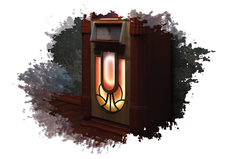Configuring Docker containers in the OwnCloud cloud
Docker Talk

Run your application smoothly and portably in the cloud with the Docker container system. This workshop takes a practical look deploying Docker with the OwnCloud cloud environment.
If you focus on virtualization today, you've surely encountered the new world of Linux container technology. Docker provides a powerful, enterprise-level tool that makes it easy for admins to roll out new and lightweight instances of their applications.
This workshop shows how to configure Docker [1] with the OwnCloud cloud service and demonstrates Docker at work with complex applications that require a web server, a database, and persistent storage.
Getting Started
It does not matter whether you use the Docker as your container manager: The basis for any container is always an image that consists of the distribution filesystem. You can either use pre-built images or build an image yourself. The do-it-yourself approach has advantages, and once you build an image, you can modify it later to adapt it to new situations.
[...]
Buy this article as PDF
(incl. VAT)
Buy Linux Magazine
Subscribe to our Linux Newsletters
Find Linux and Open Source Jobs
Subscribe to our ADMIN Newsletters
Support Our Work
Linux Magazine content is made possible with support from readers like you. Please consider contributing when you’ve found an article to be beneficial.

News
-
Parrot OS Switches to KDE Plasma Desktop
Yet another distro is making the move to the KDE Plasma desktop.
-
TUXEDO Announces Gemini 17
TUXEDO Computers has released the fourth generation of its Gemini laptop with plenty of updates.
-
Two New Distros Adopt Enlightenment
MX Moksha and AV Linux 25 join ranks with Bodhi Linux and embrace the Enlightenment desktop.
-
Solus Linux 4.8 Removes Python 2
Solus Linux 4.8 has been released with the latest Linux kernel, updated desktops, and a key removal.
-
Zorin OS 18 Hits over a Million Downloads
If you doubt Linux isn't gaining popularity, you only have to look at Zorin OS's download numbers.
-
TUXEDO Computers Scraps Snapdragon X1E-Based Laptop
Due to issues with a Snapdragon CPU, TUXEDO Computers has cancelled its plans to release a laptop based on this elite hardware.
-
Debian Unleashes Debian Libre Live
Debian Libre Live keeps your machine free of proprietary software.
-
Valve Announces Pending Release of Steam Machine
Shout it to the heavens: Steam Machine, powered by Linux, is set to arrive in 2026.
-
Happy Birthday, ADMIN Magazine!
ADMIN is celebrating its 15th anniversary with issue #90.
-
Another Linux Malware Discovered
Russian hackers use Hyper-V to hide malware within Linux virtual machines.

